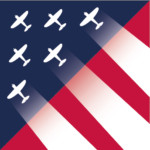NORAD Owes Much to Britain’s WW2 Chain Home System
A key component of the Royal Air Force’s success in the Battle of Britain during World War II was the Chain Home system of coastal radars, which gave early warning of German air attacks. The concept of operations of today’s North American Aerospace Defense Command, or NORAD, headquartered here at Peterson Air Force Base, owes much to Chain Home.
NORAD, a joint organization of the U.S. and Canada, provides aerospace warning, air sovereignty, and protection for North America. Chain Home served as a model for the first iterations of what has become an integrated defense against a number of potential threats that include missiles and satellites, as well as aircraft.
In the years before World War II, Britain and the U.S. were developing aircraft detection systems using radio waves. The work was in parallel but secret, and Britain was far ahead.
Chain Home and Chain Home Low, which could detect low-flying aircraft, were in place before 1939, or before the U.K. was in the war. The U.S. Army Air Corps purchased equipment from the RAF and sent representatives to RAF air defense operations centers to learn how they worked. The representatives were impressed, and brought back tactics, techniques and procedures used by the RAF.
The RAF, for example, developed the first Plan Position Indicator, or PPI, a display that showed azimuth, range and altitude with enough accuracy to allow controllers to direct fighters to Luftwaffe planes. The first PPI displays were in the H2S bombing radar that was carried initially by British and then by American bombers.
PPI was later adapted for many kinds for radars, including those first used by Britain for Ground Controlled Intercept, or GCI. The U.S. used GCI and many other British systems and procedures. With radar sets purchased from the RAF, the U.S. established the first units to train Army Air Corps officers in GCI techniques.
The U.S. Army Air Forces established the Air Defense Command early in World War II. It was disbanded when the threat dissipated late in the war, then reformed in the early days of the Cold War under the U.S. Air Force and Army (with anti-aircraft missiles) as a joint command. NORAD — then North American Air Defense Command — was jointly established with Canada in 1957.
Air Defense terminology used by RAF Fighter Command controllers and aircrews in World War II is still in use. “Bogies,” for example, are unknown and assumed enemy aircraft; “Bandits” are confirmed enemy aircraft; “Tally Ho” means the pilot has eyes on a “Bandit”; “Scramble” means launch aircraft as soon as possible; “Angels” means altitude — “Angels 15” for 15,000 feet, for instance; and “Splash” means a confirmed kill.


